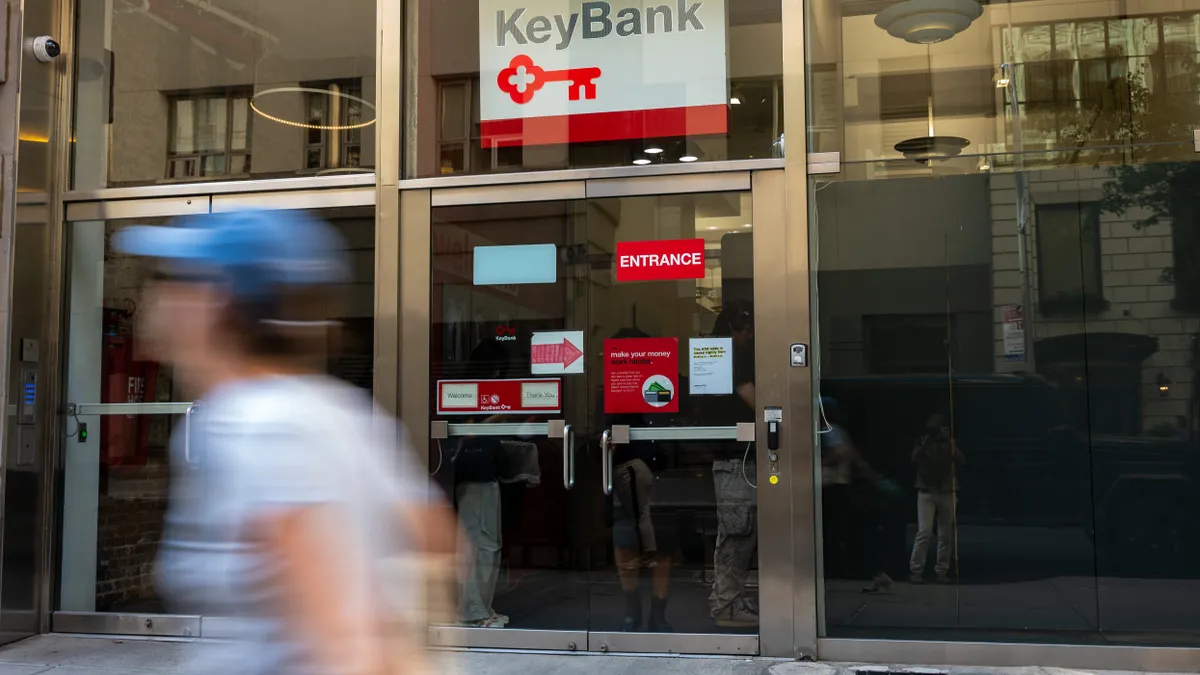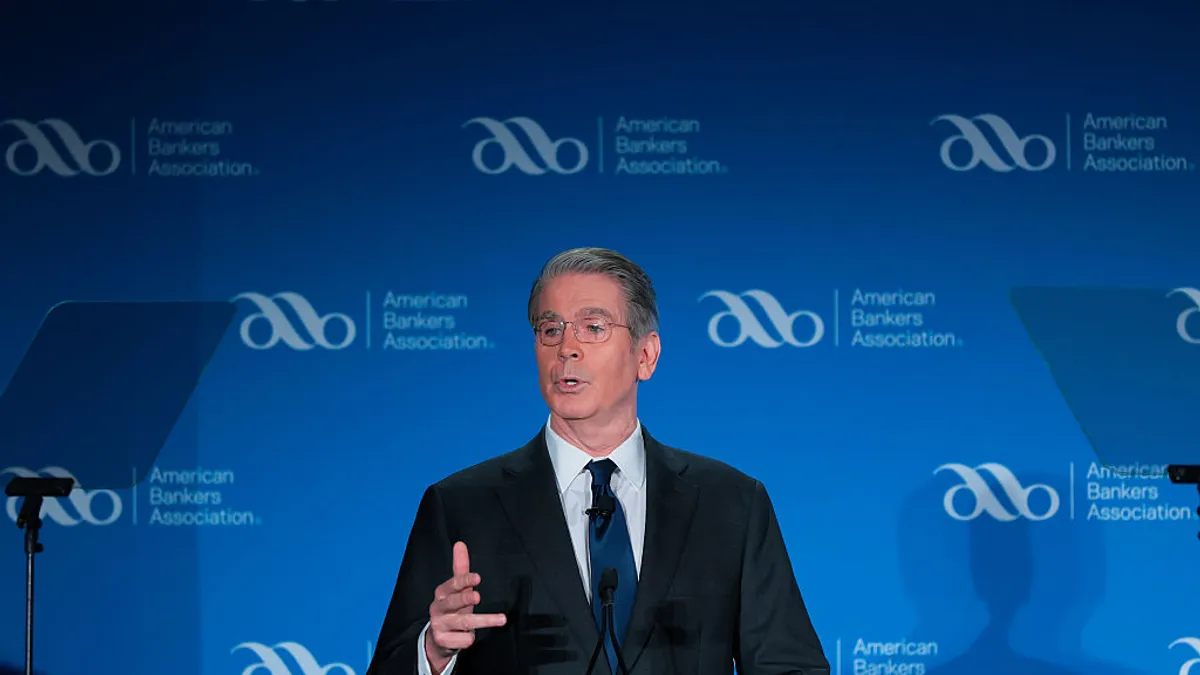Scotiabank’s 14.9% stake in KeyBank for $2.8 billion has been a “hugely rejuvenating” boost of confidence for the regional lender’s bankers, KeyBank CFO Clark Khayat said.
“As much as you tell them to go play offense, this makes it a little bit easier, psychologically, I think,” Khayat told those attending a Barclays conference last week. The Canadian lender is purchasing about 163 million shares of KeyCorp’s common stock for $17.17 per share, the Cleveland-based bank said in August.
Scotia made an initial investment of $800 million, giving it 4.9% ownership of Key’s common stock, which was completed last month. That’s to be followed by an additional investment of $2 billion, expected in the first quarter of 2025, after customary closing conditions and approval by the Federal Reserve, the banks said.
Key, which has about $187 billion in assets, wasn’t looking for capital, Khayat said.
“Scotiabank approached us. Others had, at some point in the past year or so,” he said, without naming the interested parties.
Such a deal didn’t seem to make sense for KeyBank, Khayat added, so “we said thank you, but no thank you.”
But as Key CEO Chris Gorman and Scotia CEO Scott Thomson stayed in touch and the banks became familiar with each other, Key executives saw strategic alignment with the Canadian bank, Khayat said.
The investment offers Scotia a U.S. footing, while Key sees the opportunity to return to peer-level earnings and returns sooner than later, and bolster its competitive position, Khayat said. Key will record a $700 million third-quarter loss on the sale of about $7 billion in low-yielding investment securities, the bank said in a filing last week.
The two banks are in the early stages of exploring potential partnership opportunities, but the different geographic markets they serve might offer a starting point. Key’s U.S.-based clients who do business in Canada and Mexico are “struggling” to get appropriate banking support, Khayat said. Scotia is a big player in those markets, as well as Europe, which makes for “potentially an easy hand-off” to a lender Key knows that can serve those clients while not presenting competition in the U.S., he added.
Similarly, Scotia might have a large commercial real estate client in Canada who wants to start transacting in the U.S., opening a door for Key, Khayat said.
Going further, the two banks might consider, “are there certain products that we have that would suit their clients, or products that they have that would suit our clients, that we could basically white-label to each other?” Khayat said.
Key has some sense of how to handle such scenarios through its work with fintechs, he added.
The 14.9% ownership stake, which gives Scotia two seats on Key’s board of directors, is a “threading of the needle,” from a regulatory standpoint, but “seems like the right balance,” Khayat said.
Scotia’s initial 4.9% stake was strategic, since anything above 5% requires Fed approval. Canadian lender TD’s scrapped acquisition of Memphis, Tennessee-based First Horizon was “good grounds for us to at least test the theory that we needed to have more confidence before we went down this path,” Khayat said. That said, the bank wouldn’t have taken such steps unless executives felt “highly confident.”
When Barclays analyst Jason Goldberg asked Khayat about concerns that Key may have “anchored” itself to Scotia and left other banks less likely to able to acquire Key, Khayat said the lender is in a “clean spot,” as far as its ability to make the right decision for all Key shareholders, “not just 14.9% of them.”
“If you walk down that path, and the right transaction were to come along for Key, then our board would do the right thing, and make the decision that makes the most sense to all of our shareholders,” he said. “That was a critically important point for us, and I think the ultimate agreement reflects that.”
As far as additional uses of the capital, Khayat said Key envisions being able to support clients as loan growth returns. And the bank is more likely to consider tuck-in type deals, such as “M&A boutiques, payments platforms, maybe some wealth-related shops – places that focus on the fee income streams we care about,” over whole-bank acquisitions, he indicated.
Getting through the Scotia transaction, repositioning Key’s investment portfolio and catching up to peers when it comes to earnings will be plenty of work, and needs to come before an acquisition, he said.
“If the right transaction were to present itself, I think it’s our job to consider that,” Khayat said. But Key’s hurdles are going to be “pretty high, until we’re back into a place where we feel like we’ve fully done the self-help journey and we’re ready to integrate something else.”
Khayat also noted the bank’s expenses are likely to increase in 2025, largely because of inflation. The expense increase will be “supportable” given the revenue increase the bank expects, he asserted. Key has kept expense growth flat for the past few years, and cut a number of full-time employees last year to keep expenses in line, he said. The bank went from 18,891 full- and part-time employees at the end of 2022 to 17,333 at the end of 2023, according to its annual filings from the past two years.






















